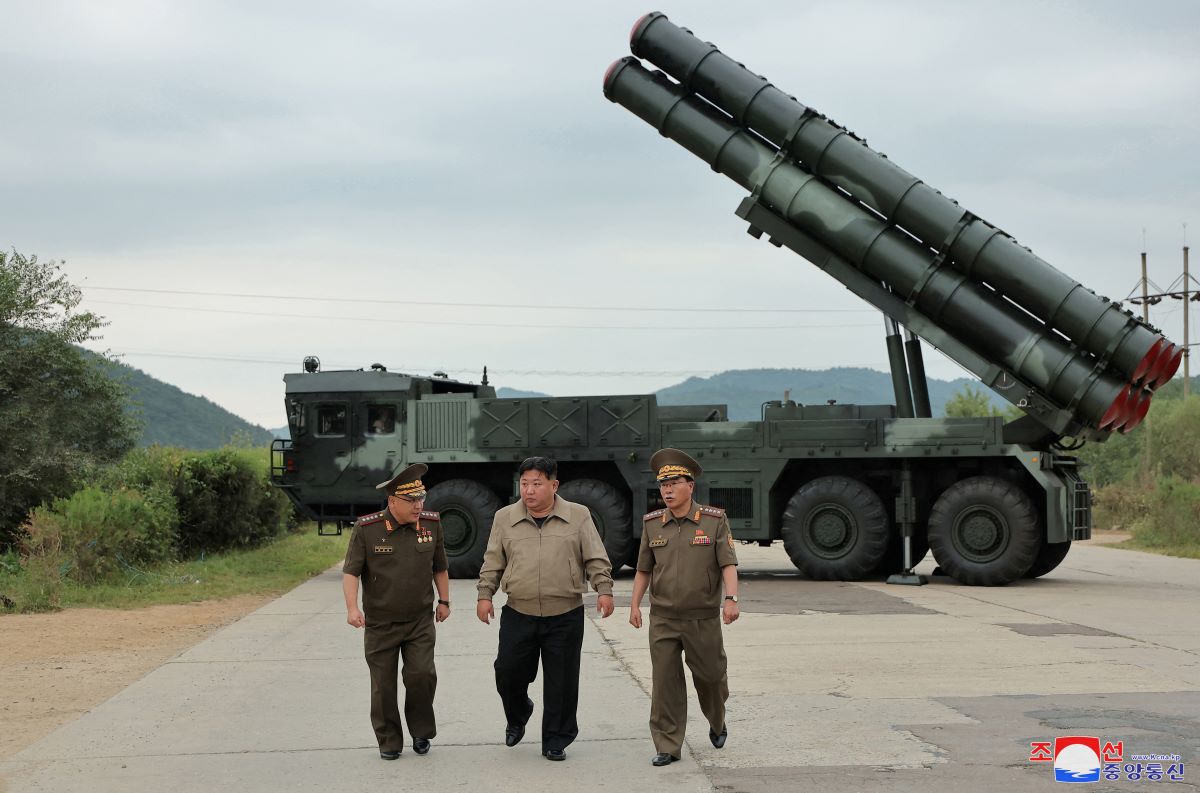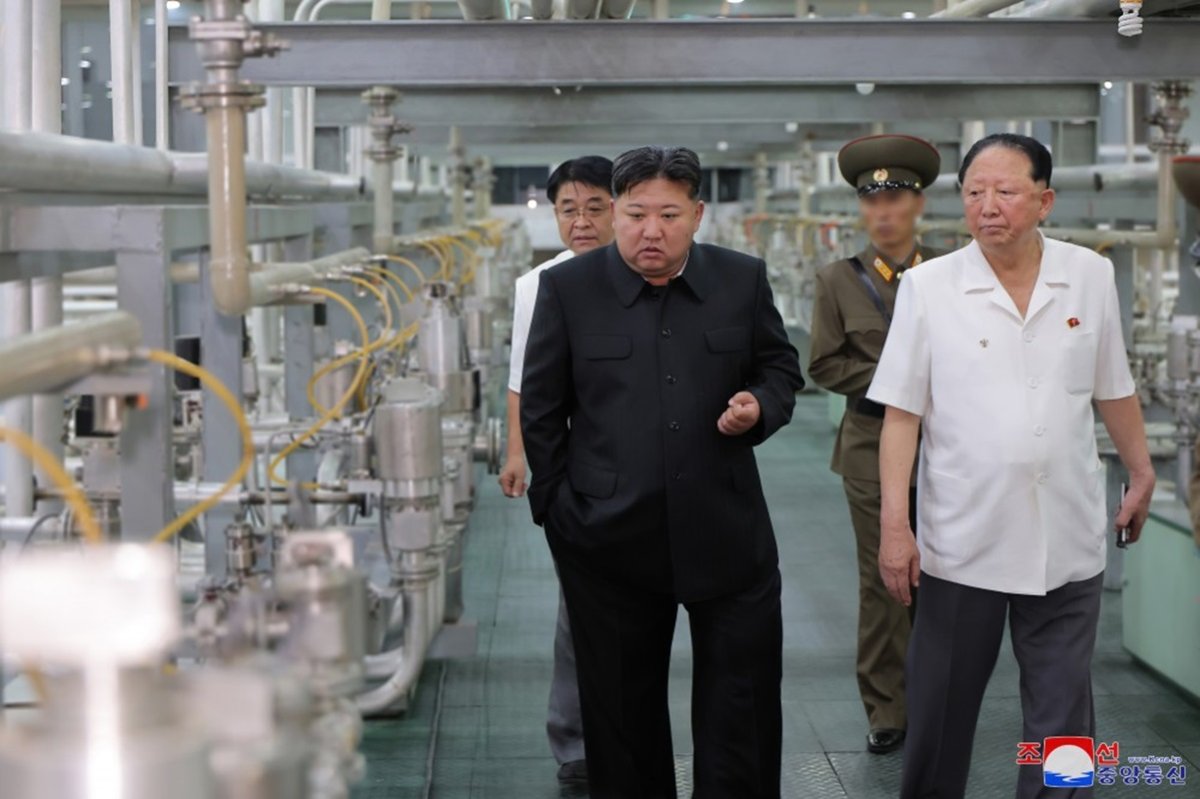On Friday, North Korea revealed a weapons-grade uranium-manufacturing site for the first time, as its leader, Kim Jong-un, showcased the expansion of the country’s nuclear weapons program. This announcement comes ahead of the U.S. presidential election in November.
Kim Jong-un recently visited a centrifuge plant—previously a highly protected element of North Korea’s nuclear weapons program—and urged his engineers to increase their production of highly enriched uranium to significantly boost the country’s nuclear arsenal, according to the North’s official Korean Central News Agency.
The agency released photos of Kim inspecting what appeared to be a modern facility filled with rows of centrifuges used to enrich uranium.
These images are likely to be scrutinized by foreign governments for intelligence purposes, especially as tensions rise with South Korea and the Biden administration shifts its nuclear strategy to address potential threats from China, Russia, and North Korea.
Although North Korea showed a centrifuge plant to a team of former U.S. officials and academics, including former Los Alamos National Laboratory director Siegfried Hecker, in 2010, Friday’s report and photos mark the first time such a facility has been revealed to the global public.
The United Nations Security Council has imposed resolutions banning North Korea from developing nuclear weapons, but the country has ignored these restrictions by producing nuclear bomb fuel, conducting six underground nuclear tests, and testing ballistic missiles capable of delivering nuclear warheads.
After Dr. Hecker’s 2010 visit to Yongbyon, he reported that the facility contained approximately 2,000 gas centrifuges. However, North Korea is believed to operate additional centrifuge plants at undisclosed locations, with Kangson, near Pyongyang, suspected to be one such site.
In June, Rafael Grossi, the director-general of the International Atomic Energy Agency, noted that the Kangson complex shares similarities with the Yongbyon facility.
On Friday, North Korea did not disclose the location or production capacity of the plant Kim Jong-un visited.
However, state media reported that Kim emphasized the need to increase the number of centrifuges to exponentially enhance the country’s nuclear weapons for self-defense. He also announced the introduction of a “new-type centrifuge” to further boost weapons-grade nuclear material production.

North Korea’s Missile Program (Photo: Korean Central News Agency)
The North Korean nuclear crisis began in the early 1990s when the United States accused North Korea of producing plutonium from spent fuel at a Soviet-designed reactor in Yongbyon. It was later revealed that North Korea was also procuring highly enriched uranium for atomic bombs.
North Korea conducted six nuclear tests between 2006 and 2017. The Stockholm International Peace Research Institute estimated in June that North Korea had approximately 50 nuclear warheads and enough fissile material to produce about 40 more.
North Korea’s nuclear capabilities rely heavily on missiles for delivery, as it lacks advanced warplanes or submarines.
Under Kim Jong-un, the country has diversified its missile arsenal, testing various short- and long-range missiles and increasing bomb fuel production. On Thursday, North Korea launched several short-range ballistic missiles off its east coast, marking its first missile tests in over two months.
Recently, Kim Jong-un has emphasized the production of additional short-range ballistic missiles, some of which, according to researchers, have been supplied to Russia for use in the Ukraine conflict.
North Korea has claimed that many of its short-range ballistic missiles are capable of carrying nuclear warheads. In August, the country announced the deployment of 250 launchers for such nuclear missiles near the South Korean border.
On Friday, state media quoted Kim Jong-un as stating that North Korea needs more nuclear materials to produce additional short-range “tactical nuclear weapons.”
Kim’s visit to the uranium-enrichment facility comes as the U.S. presidential election campaign intensifies, with North Korea becoming a topic in the political discourse.
Former President Donald J. Trump, during his acceptance of the Republican Party’s presidential nomination in July, remarked on his relationship with Kim Jong-un, while his Democratic rival, Vice President Kamala Harris, criticized Trump’s personal rapport with the North Korean leader during a debate.
On Friday, the South Korean government strongly condemned North Korea’s nuclear weapons program, including its short-range tactical nuclear weapons.
It announced plans to address the North Korean nuclear threat by strengthening its alliance with the United States, with both nations preparing joint strategies to counter a potential nuclear attack from North Korea.











































